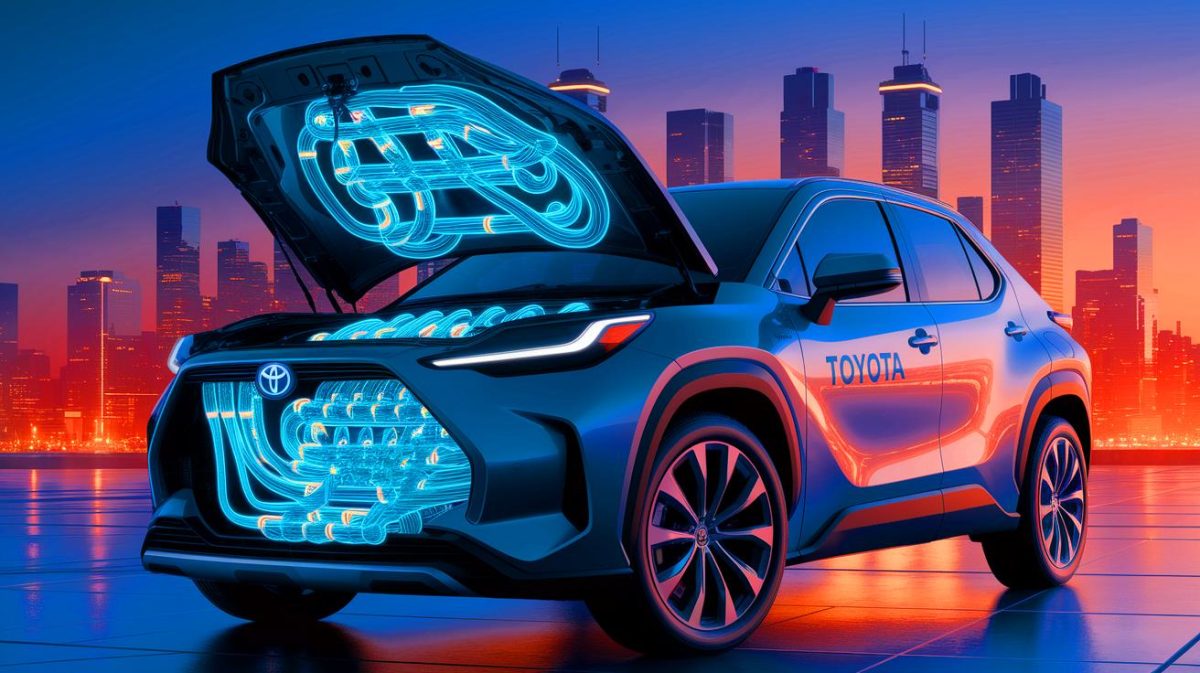The idea once sounded like science fiction: a car powered by water. In truth, the breakthrough taking shape in Japan is rooted in hydrogen, not hocus-pocus. What matters is that the technology now runs reliably and points to a credible path beyond the internal combustion engine.
For drivers, the promise is tangible: quick refueling, long range, and near-zero tailpipe emissions. For the industry, it signals a new contest between battery-electric vehicles and hydrogen-powered systems, each with distinct strengths.
What a “water engine” really is
Contrary to popular myths, no one is “burning” water. Toyota’s approach uses electrolysis to split water into hydrogen and oxygen, then a fuel cell converts that hydrogen into electricity to drive the motors.
The only byproduct at the tailpipe is water vapor. Pair that with renewable electricity upstream and you get a drivetrain that can be nearly carbon-free from end to end.
“We are not burning water; we’re unlocking hydrogen and turning it into clean electricity.”
Why it matters now
Hydrogen systems deliver a familiar mobility experience. You refuel in minutes, not hours, and you can drive for hundreds of kilometers without range anxiety. For fleets, logistics, and long-distance commuters, this balance sounds compelling.
On efficiency, the well-to-wheels math depends on how you make the hydrogen. Green hydrogen from renewables lifts the environmental case, while fossil-based hydrogen erodes it. Even then, the operational reliability and flexible packaging of a fuel-cell stack offer practical advantages.
Strengths—and the hard parts
The headline benefits are clear: zero tailpipe emissions, rapid refueling, and competitive autonomy versus gasoline vehicles. Unlike combustion, there’s no engine noise or vibration, and thermal management is simpler than it looks.
But the challenges are non-trivial. Hydrogen stations are still scarce, and building them isn’t cheap. If electrolysis runs on coal-heavy grids, the climate gains shrink. Safety is manageable with modern tanks and protocols, but public perception takes time to catch up.
- Build dense infrastructure where demand is highest
- Scale up green hydrogen via renewables-powered electrolysis
- Standardize storage and refueling hardware across brands
- Support early adoption with clear policy and incentives
- Drive down stack and tank costs through manufacturing scale
- Educate consumers on safety, maintenance, and total cost of ownership
How it compares to rivals
Toyota is far from alone. Hyundai’s Nexo has shown the everyday viability of fuel-cell SUVs, while BMW is piloting hydrogen solutions for later this decade. Toyota’s Mirai has set long-distance records already, proving the fundamentals.
There’s also a split in strategy: hydrogen fuel cells versus hydrogen combustion engines. Fuel cells convert hydrogen into electricity; hydrogen combustion modifies a traditional engine to burn hydrogen directly. The former is quieter and more efficient; the latter can leverage existing engine manufacturing and motorsport development. Toyota is exploring both, signaling a hedged bet on where the market will land.
The system-level equation
Transportation doesn’t exist in isolation. The grid, renewables build-out, and heavy-industry decarbonization all influence the cost and availability of clean hydrogen. In regions investing in offshore wind, solar, and industrial electrolysis, hydrogen vehicles benefit from existing production and transport momentum.
Where batteries shine—short trips, dense urban charging, low electricity prices—BEVs will remain formidable. Where uptime, payload, cold-weather resilience, or long routes dominate, hydrogen has a shot at winning. Expect a mixed ecosystem, not a single winner.
Policy, timelines, and tipping points
Public policy will make or break adoption. National programs that co-fund stations and electrolyzers can compress timelines dramatically. Europe, Japan, and parts of the United States already earmark funds for corridor refueling and green-hydrogen hubs—an encouraging sign for early fleets.
If infrastructure scales through the late 2020s, consumer products can follow in the early 2030s with broader availability and lower prices. Cross-industry partnerships—automakers, energy companies, and governments—will be the decisive factor.
What drivers can expect
The day-to-day experience should feel familiar: quiet, smooth power, quick fill-ups, and long-range trips without detours. Maintenance profiles differ from combustion, with fewer moving parts in the primary propulsion system, though high-pressure tanks and filters need periodic attention.
Crucially, early adopters will likely see hydrogen first in fleets, premium sedans, and performance testbeds. As volumes grow, costs fall, and station density improves, mainstream segments will follow.
A pragmatic revolution
For all the hype, the most important shift is pragmatic: leverage hydrogen where it makes sense, complement batteries where they excel, and phase down fossil fuels with a portfolio of solutions. Toyota’s operational system doesn’t just hint at a technological milestone; it points to an industrial strategy that could reshape mobility.
If the pieces align—renewables, infrastructure, and scale—hydrogen-powered vehicles could quietly rewrite the rulebook and hasten the sunset of the thermal era.
